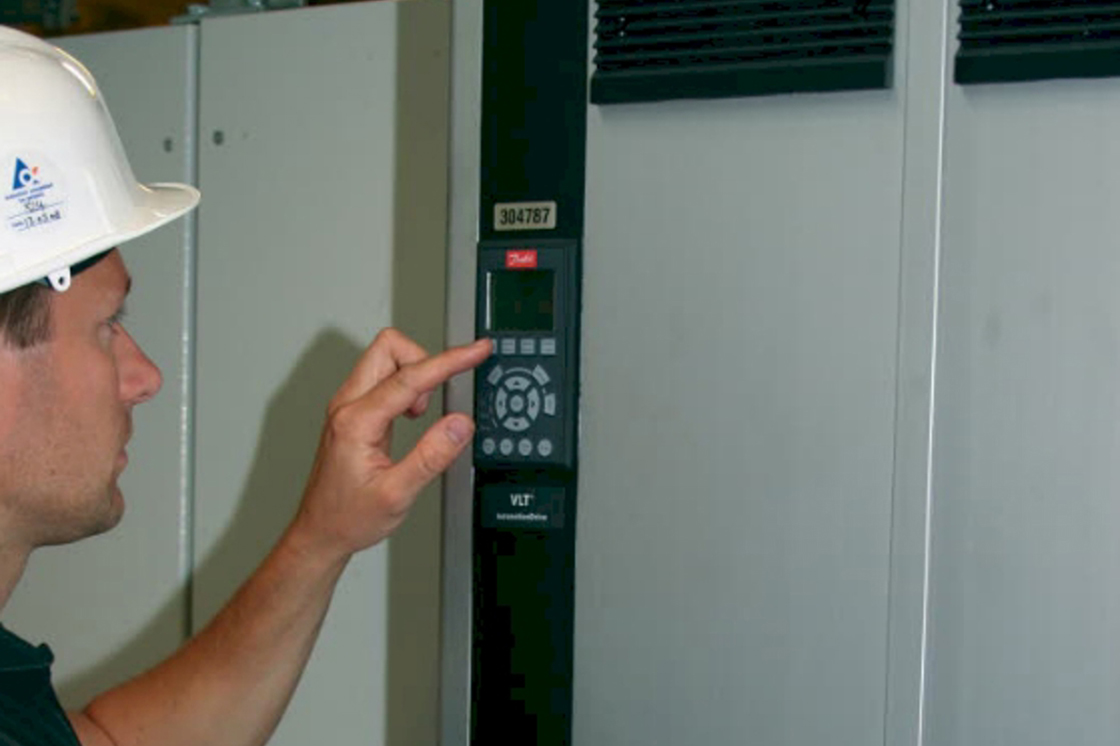
The purpose of this article is to provide a brief introduction to the available alternative harmonic mitigation methods, with particular reference to AC variable frequency drives and with special attention given to the ‘Slim DC-Link’ method.
Fourier's theory states that any repetitive waveform can be defined in terms of summing the sinusoidal waveforms that are integer multiples of the fundamental frequency. ‘Harmonics’ refers to these summed higher frequency waveforms that make up the distorted fundamental waveform. In the electrical context, ‘harmonics’ are the high-frequency components of a distorted voltage or current waveform.
Harmonics and causes
Power system harmonics is an area that is presently receiving a great deal of attention. This is primarily due to the rapid increase in non-linear, single-phase loads such as switched-mode power supplies, small fluorescent lighting ballasts, small uninterruptible power supplies units and single-phase voltage controllers, along with the growth of transistor-controlled three-phase loads such as variable speed drives and large uninterruptible power supply units. Together these comprise an ever-increasing portion of the total load of a typical industrial plant, driven by the need to speed production and increase energy efficiency. In an ideal power system, the current and voltage waveforms would be pure sinusoids. However, in practice, non-sinusoidal currents are generated when the input supply is rapidly switched so that the current flowing in the loads is not linearly related to the applied voltage. The non-linear currents drawn from the supply interact with the supply reactance to cause distortion of the voltage supply and these unwelcome non-sinusoidal voltages can cause problems both on the supply system and throughout the plant and the wider electrical environment.

Mains borne harmonics
So what exactly are mains borne harmonics? Harmonics are sinusoidal waves that are a multiple frequency of commercial power (fundamental frequency 50Hz or 60Hz). In short, they create a distortion of what should ideally be a pure sinusoid. Commercial mains power inevitably contains some harmonic content and thus has a waveform distorted to some degree. Some electrical and electronic devices create distorted waves because of their input rectifiers and smoothing circuits. Harmonics produced by these devices, can, if severe enough, influence other electrical equipment and facilities on the same power supply.
Problems caused by harmonic currents are overloading of neutrals, overheating of transformers, nuisance tripping of circuit breakers, over-stressing of power-factor correction capacitors and skin effect in cables. Moreover, problems caused by harmonic voltages are reduced system efficiency, over-heating and torque ripple of induction motors and, in severe cases, plant breakdown.
Bad news
So harmonic distortion is generally bad news and in a number of ways incurs unnecessary costs. Harmonic reduction, or mitigation, is therefore essential to avoid diminishing the life of plant, reduce downtime and improve efficiency, ergo, to save money. It is like insurance; it is done to prevent problems from arising. Harmonic mitigation will increase transformer loading capability, and prolong equipment life, there will be higher equipment efficiencies and a lower instance of equipment tripping and production stoppages.
Mitigation techniques
To avoid excessive impairment of mains power quality, a variety of reduction, avoidance or compensation methods can be used with systems and devices that generate harmonics.
- Passive filters – Series LC circuits tuned to the individual harmonic frequencies and connected in parallel with the load reduce the total harmonic distortion.
- Active filters – Electronic absorption circuits installed in parallel with the non–linear loads. These cancel the harmonic voltages and currents and prevent distortion on the power system.
- Multi-pulse input rectification – Drive input rectifier circuits with a high number of pulses per cycle (12, 18 or 24) generate lower harmonic levels.
- Active front end – IGBT switches are used on the drive input circuits in place of conventional rectifiers. These circuits use semiconductor devices with fast switching characteristics to force the input current to be approximately sinusoidal and they are very effective in attenuating low-frequency mains interference.
- Chokes at the input or in the DC link – Inductors installed in series with the drive input or the DC link provide impedance that increases with the frequency of the currents passing through.
However, the foregoing mitigation techniques incur costs additional to that of the drive itself. The graph illustrates the scale of the overall cost against the improvement in harmonic mitigation performance.
Article by Ioannis Moles
